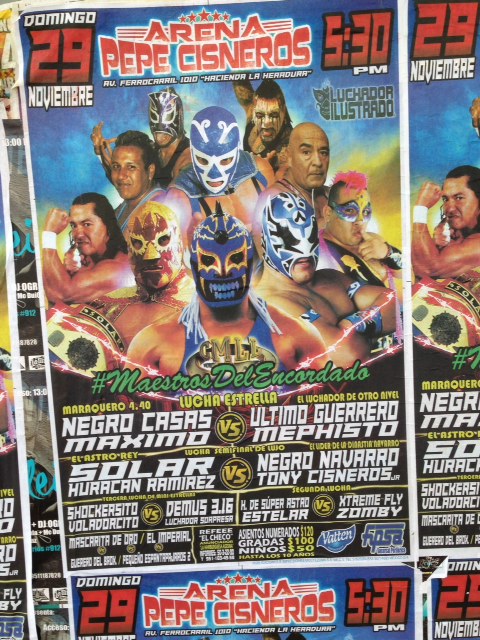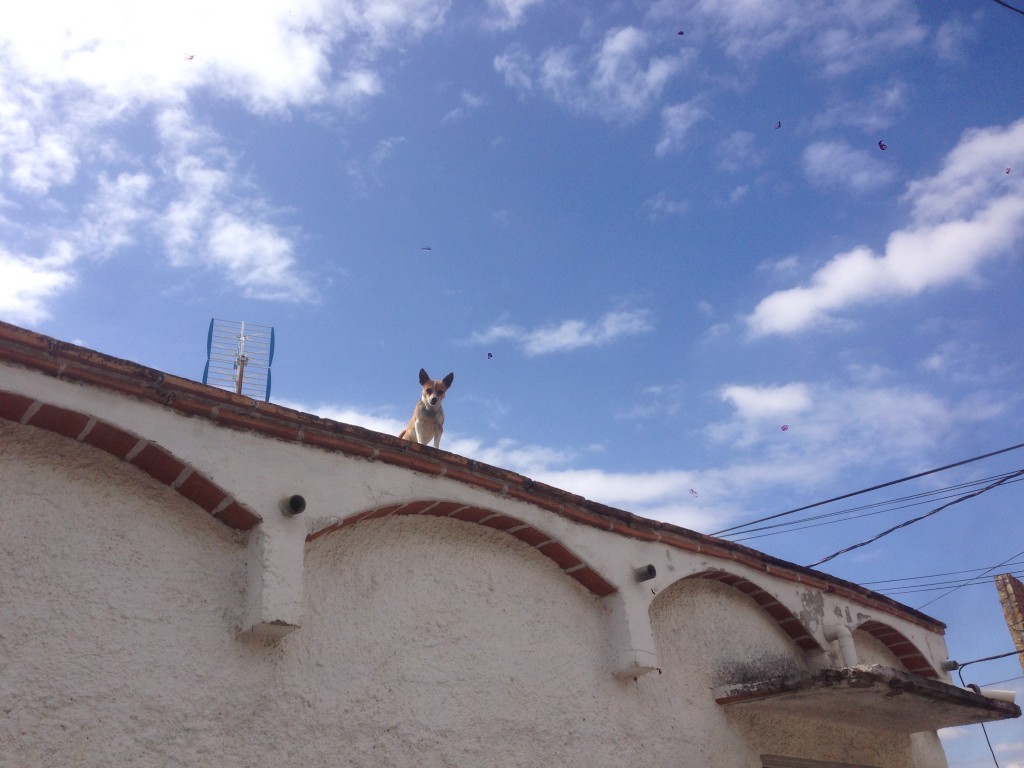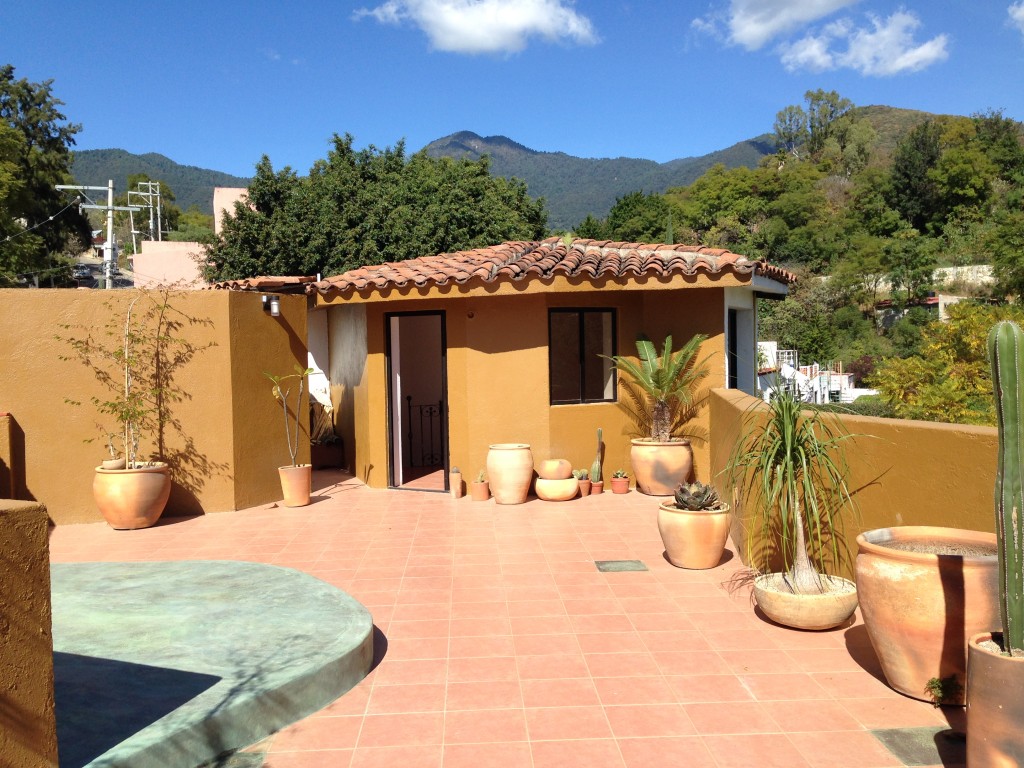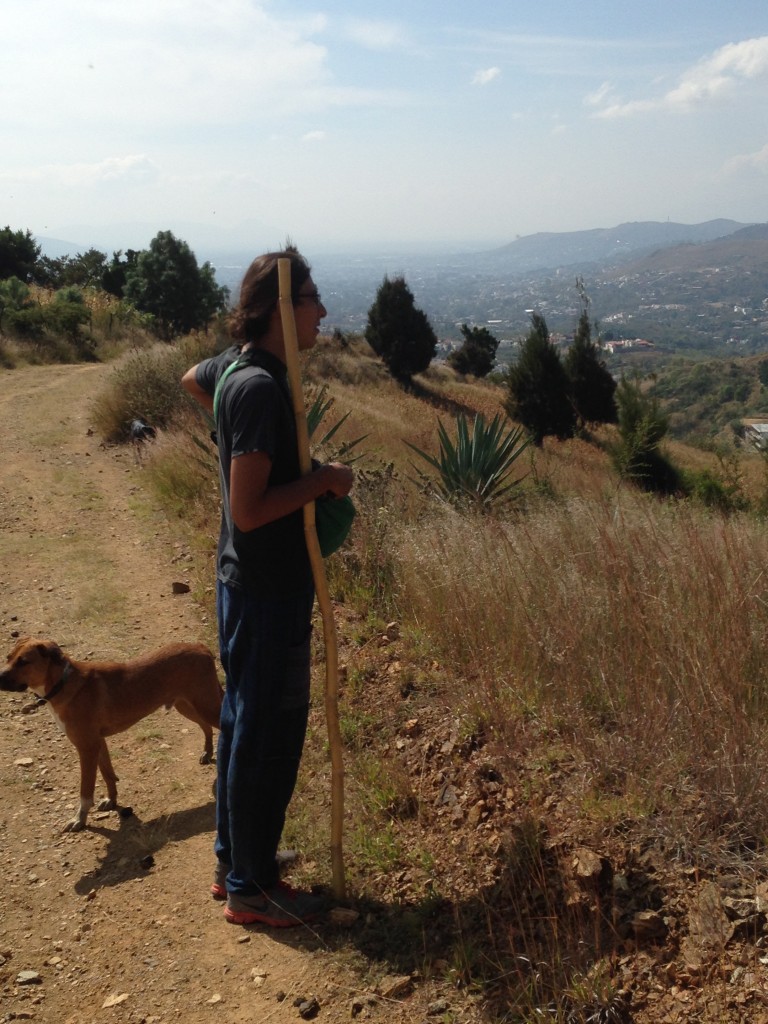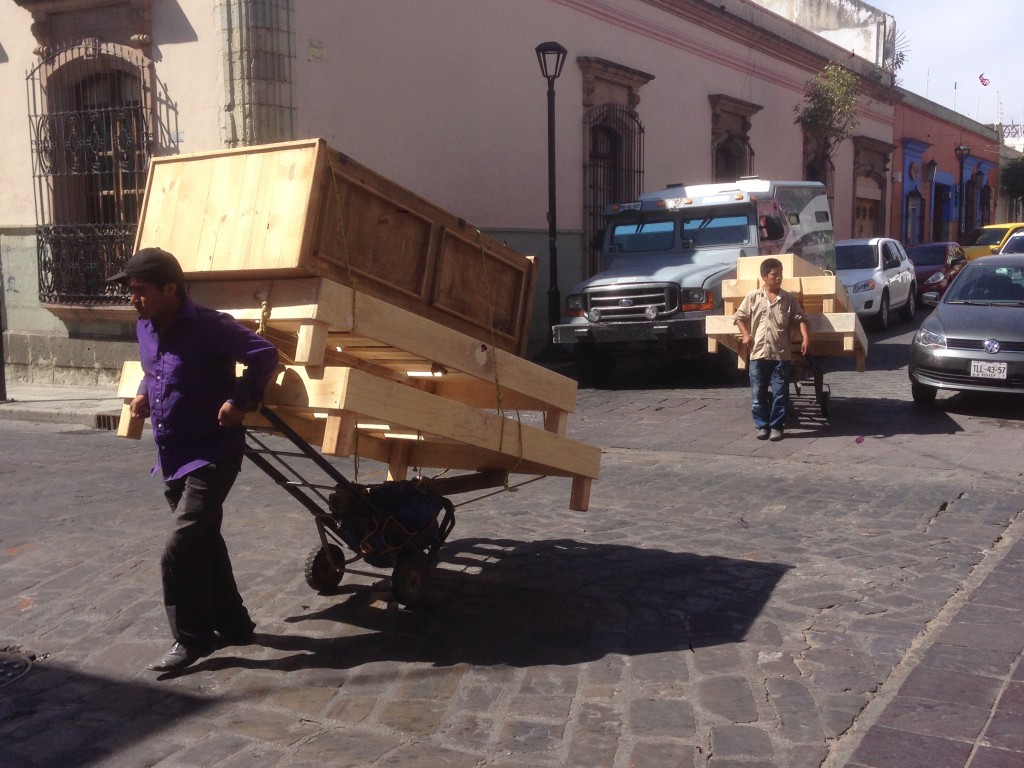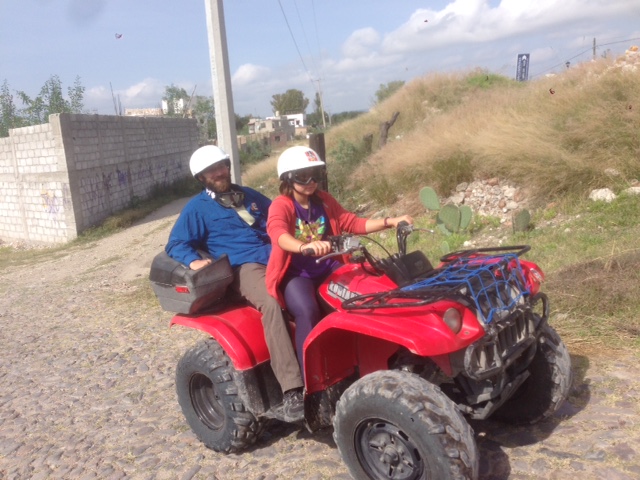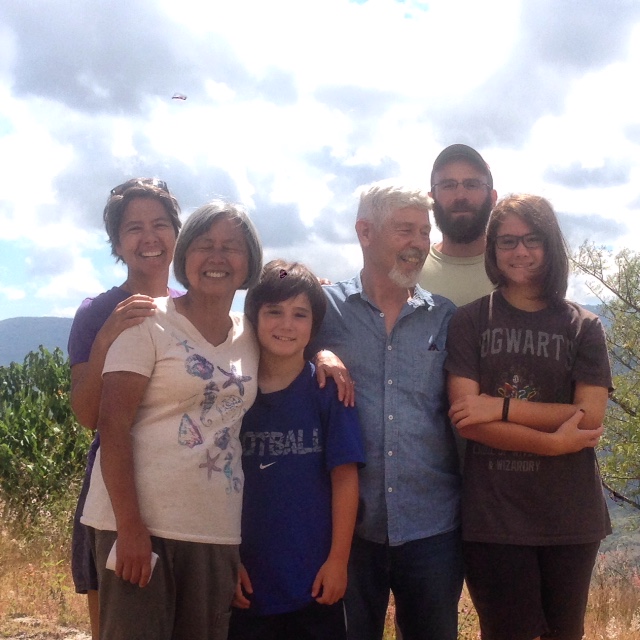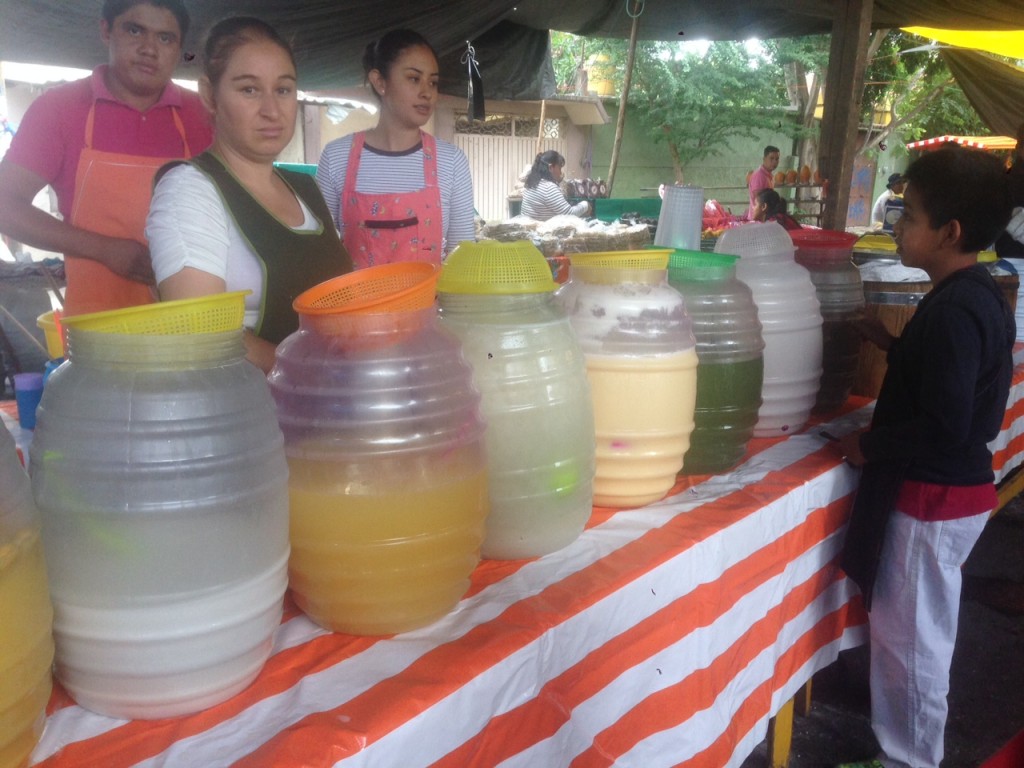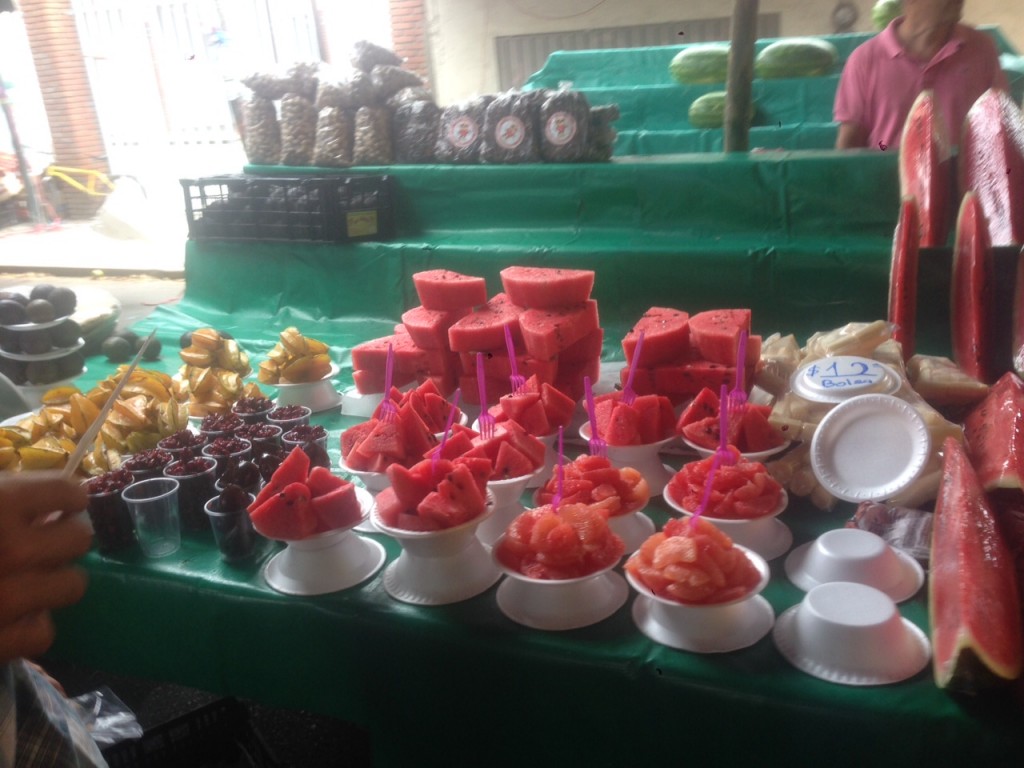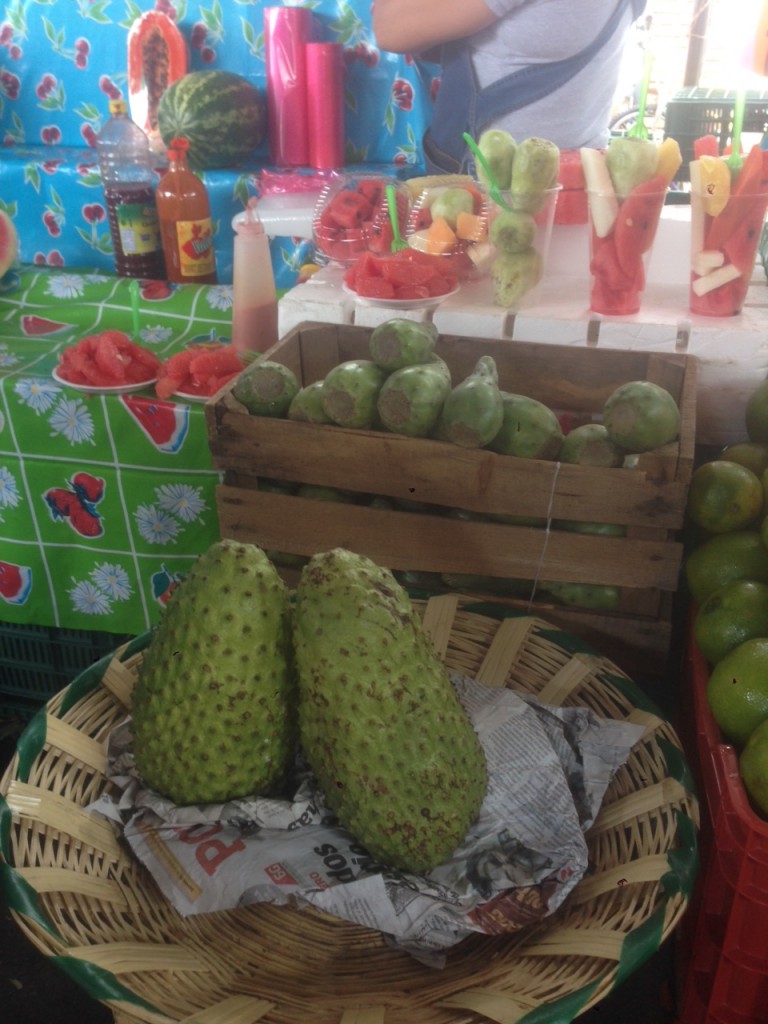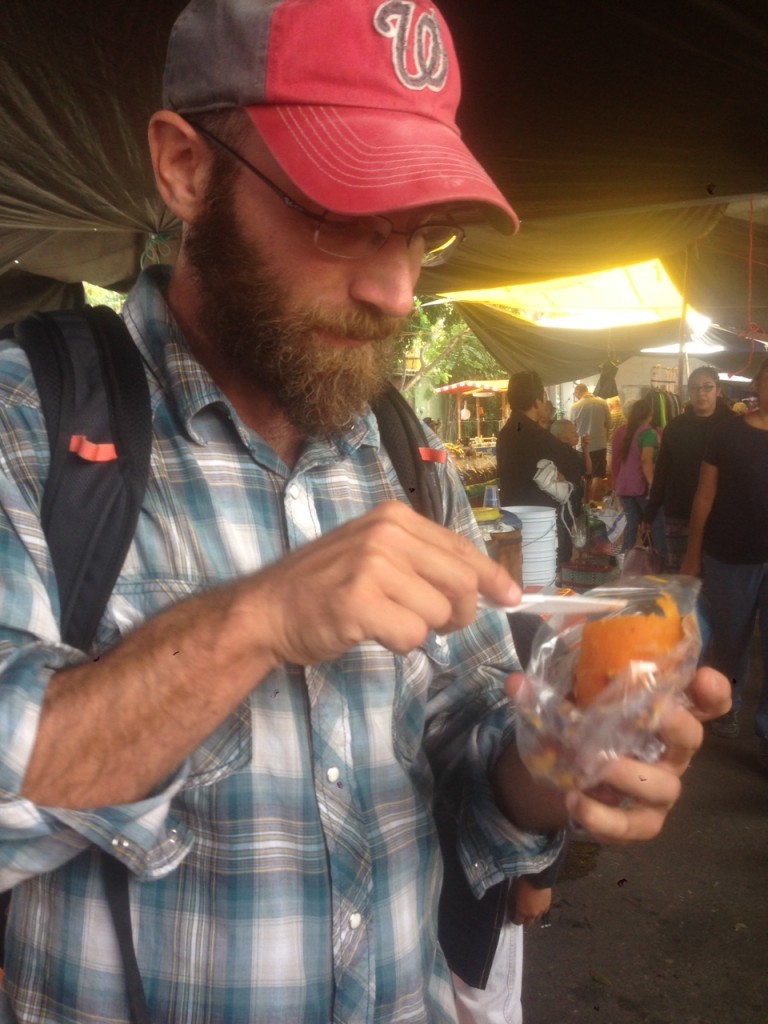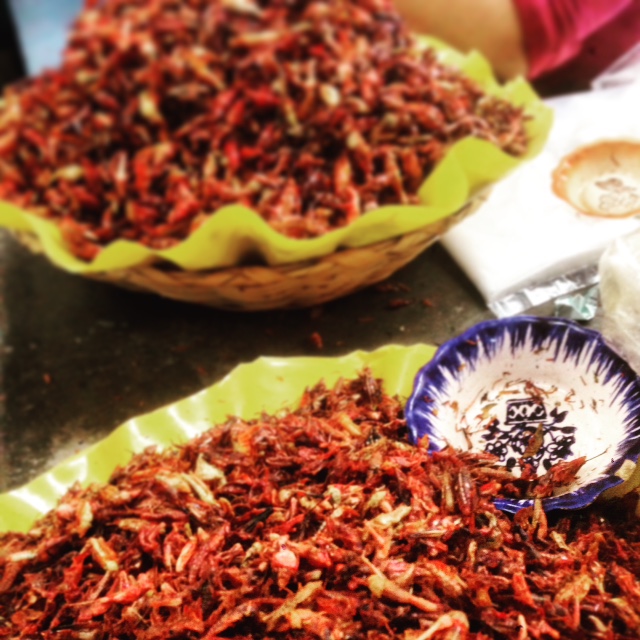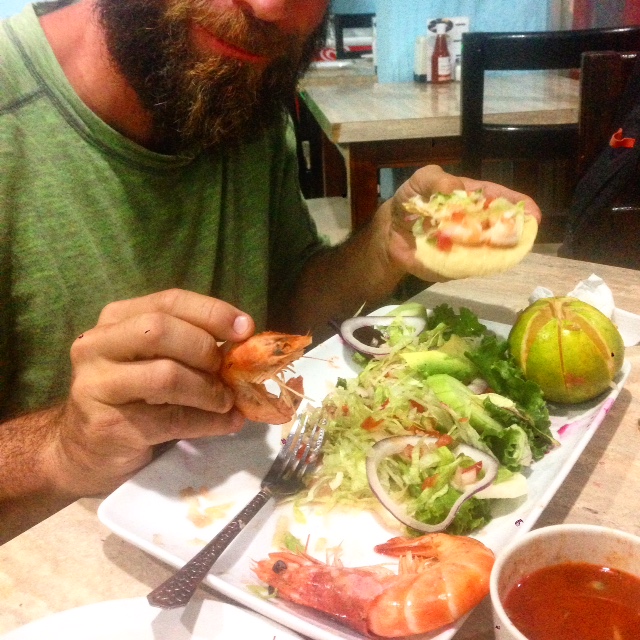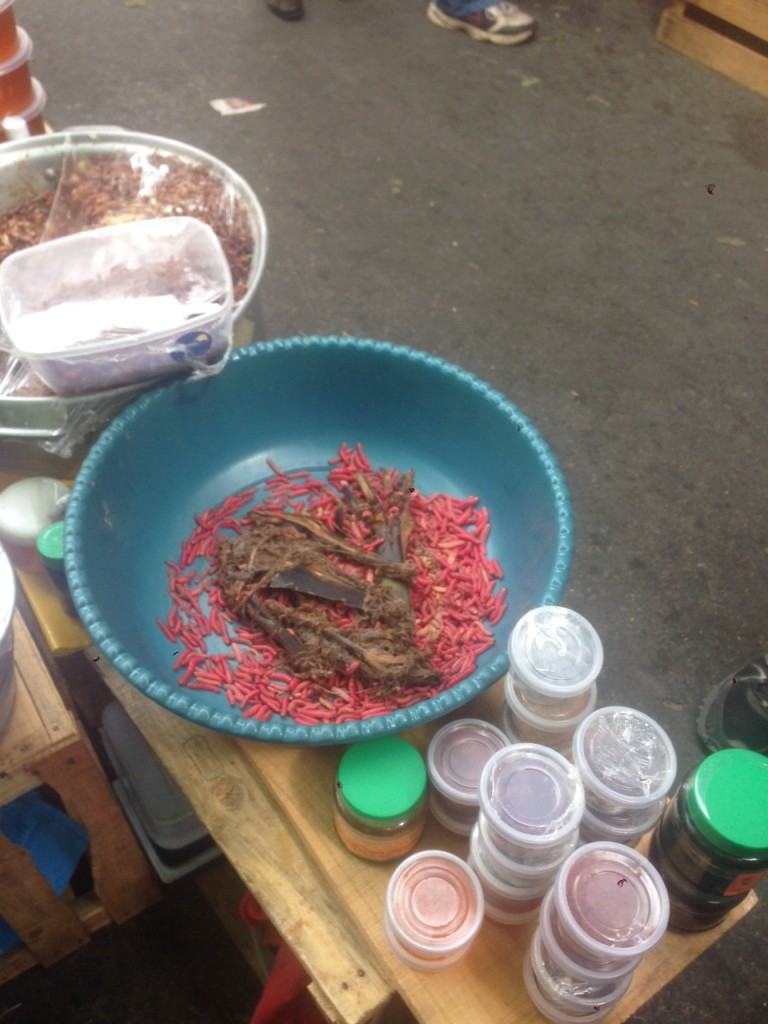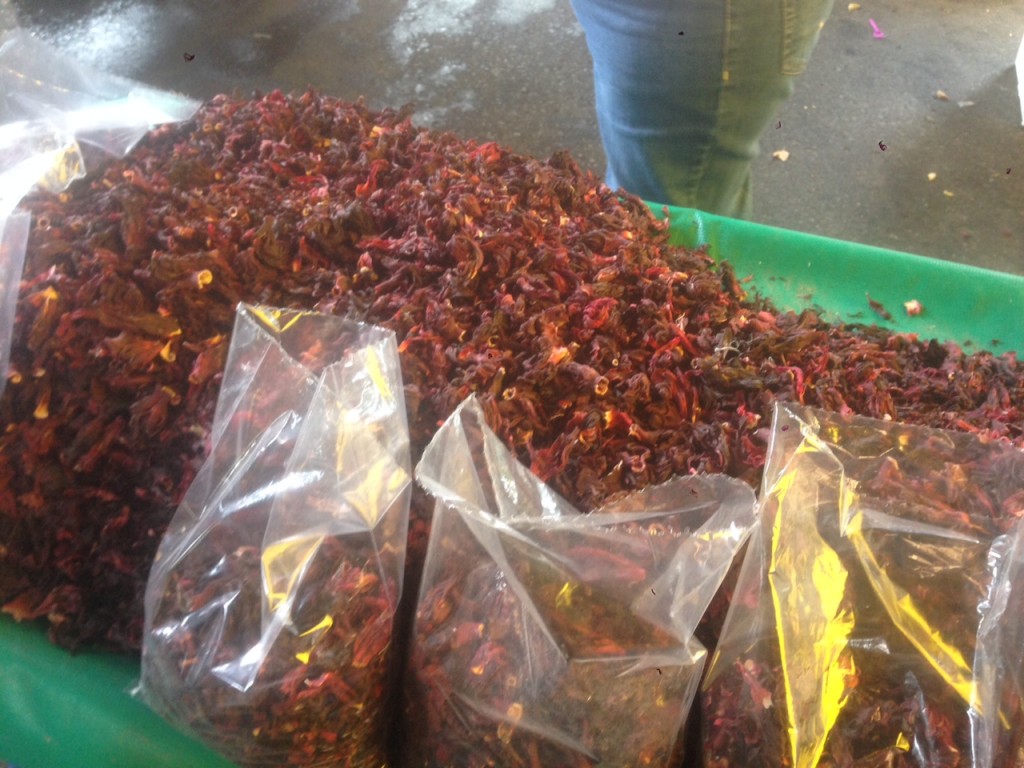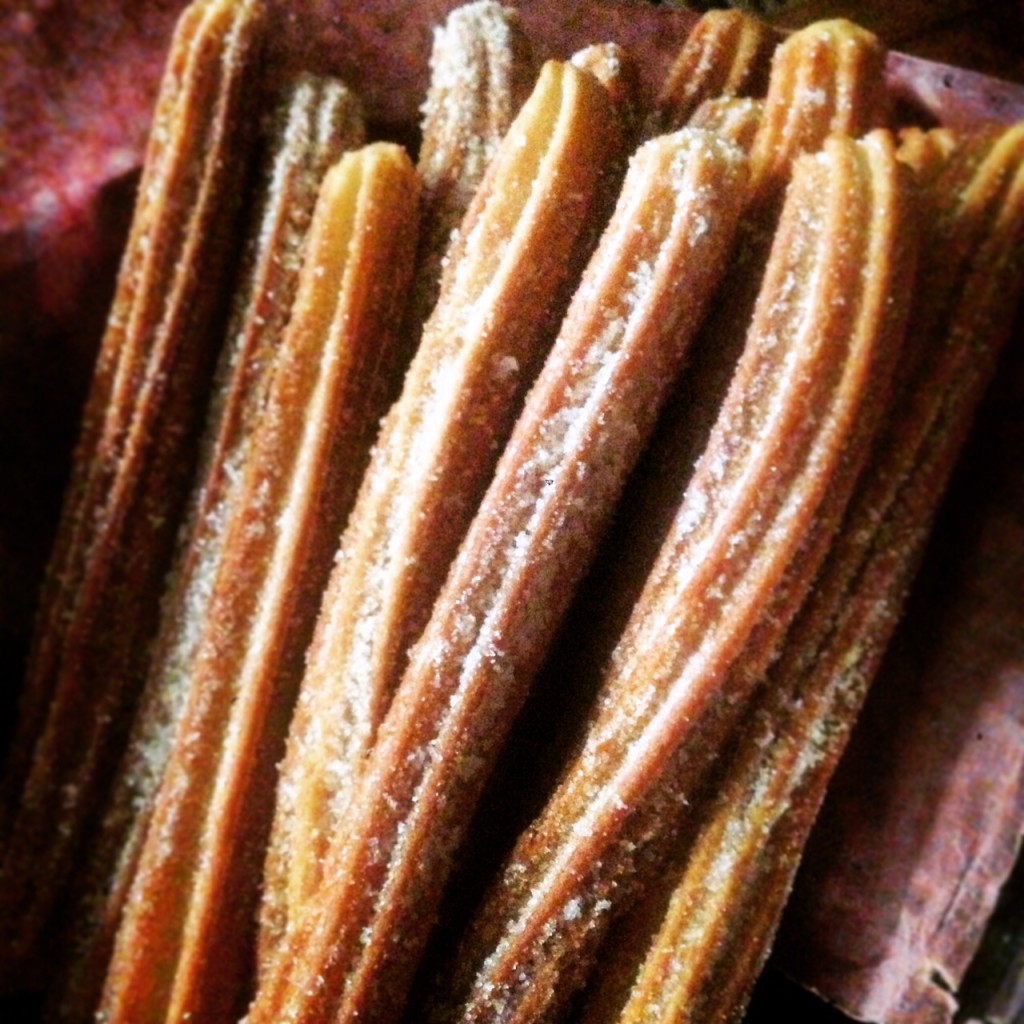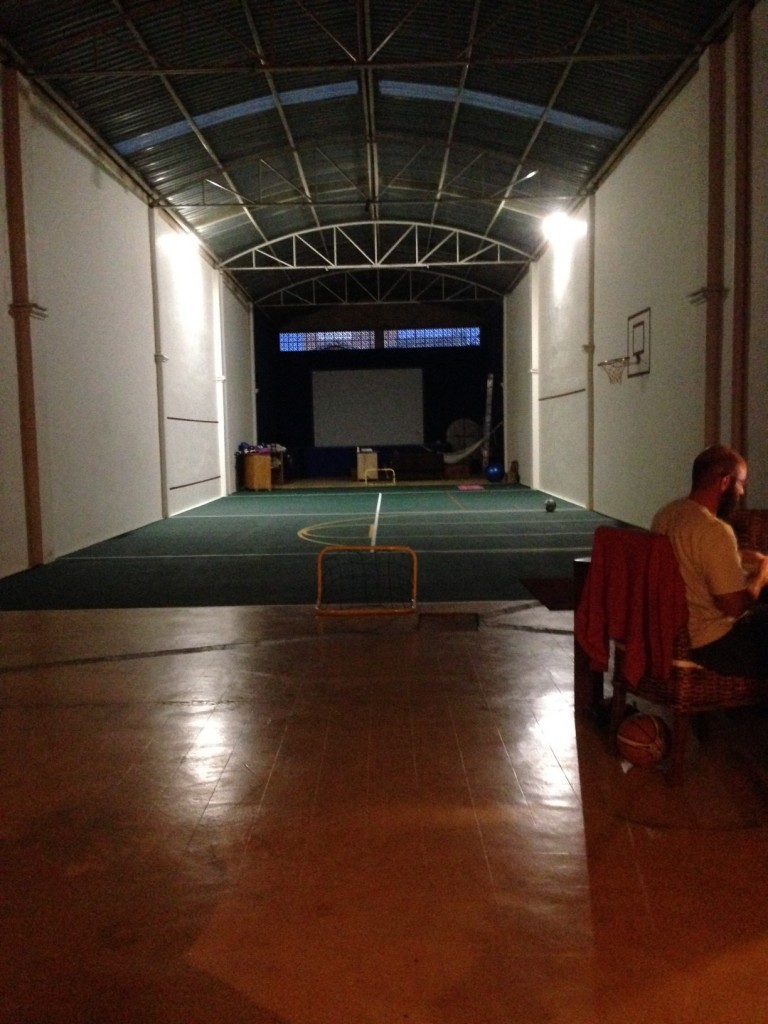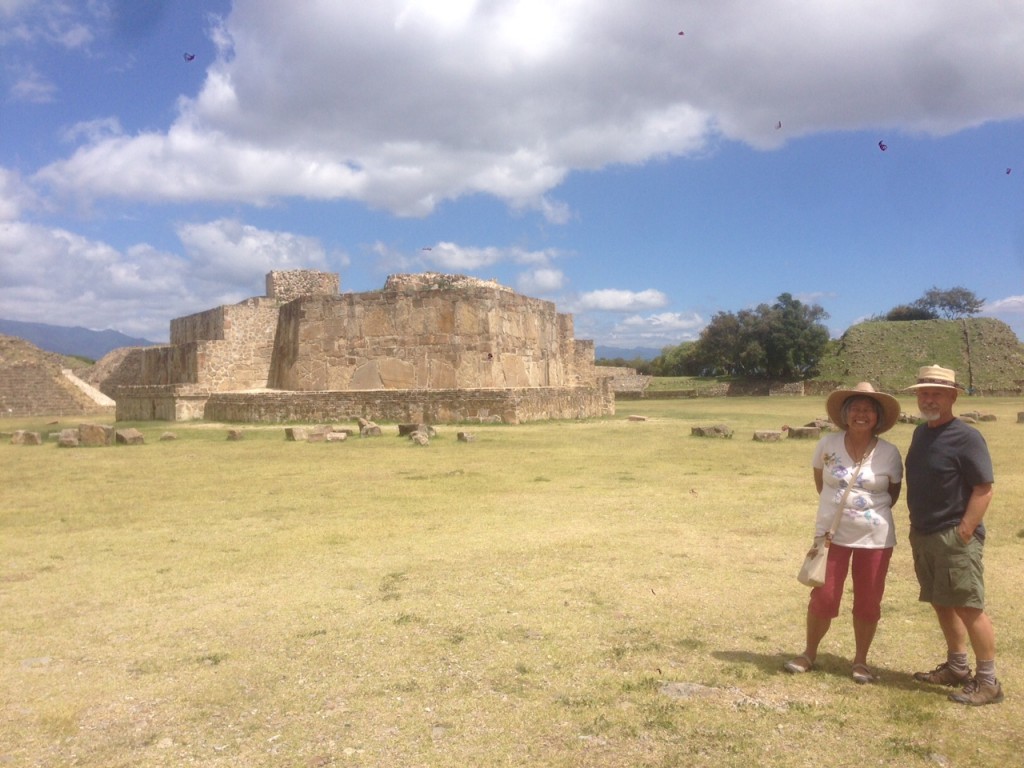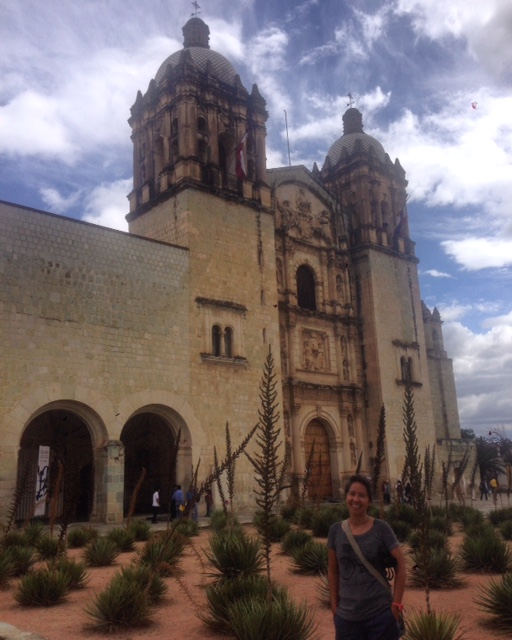In advance of our year on the road, we presented the Alexandria City Public School (ACPS) system with a thoughtful home school curriculum covering everything from animal migratory patterns to car mechanics that any self-motivated student would be thrilled and excited to study. ACPS stamped its approval and we went merrily on our way. What we didn’t consider was that we would not be bringing any self-motivated students along with us.
On the road again - kind of
We left Oaxaca/San Felipe on Saturday. Coconut and J’s last day of school was on Thursday and they were recognized with an ovation by the student body during morning calisthenics. Neither one of them speaks Spanish well enough to tell me the words said by the teachers, so in the end, R and I may have just bought ourselves freedom for the month at the low cost of the prorated tuition. It was worth it. San Felipe gave us many happy days. The house we rented was great - it had decks with views, balconies with views, comfy beds with views, hot showers, a walk-in closet that was bigger than Wesley, and all kinds of things to explore in any direction you turned once you stepped out the door to the street. And across the way was an outdoor wedding facility, so each Saturday night we got our fill of Mexican pop music, live mariachi bands, and American faves like Guns n’ Roses and Journey cranked all the way up by the D.J. until two a.m.
Overall, including San Felipe, we’ve been in the Oaxaca area since October 11. Although I probably spent way more time than is healthy sitting alone in a chair watching the sun move across the mountains, even I can make friends in a month and a half, and the people you meet are part of what make a place memorable. So R and I were happy that we were able to make some friends who we hope to see again in other places, and meet a bunch of people who we would be happy to see again if we make it back to Oaxaca.
We had a couple of fun times with Octavio and Farina, our landlords by proxy while the owner of the house was in Mexico City, and they told us how to fend off wild dogs and about places to go and things to do as we head on down the highway. We also got a lot of good advice from the amazing and inspiring Andre and Susan, who drive here from Montreal every winter to camp at an agave farm, and we heard lots of entertaining stories about their own overlanding adventures – some of which we hope not to repeat (especially the one where Andre sunk his van in mud up to the floorboards while trying to cross the Atacame Desert in Bolivia by the road less traveled.) We even made friends with the mechanic who did some work on Wesley – and he told us about a carrera bocho (a race with souped up VW Bugs) held one Sunday afternoon, where dogs and people were just as likely to be on the dirt track as race cars.
Because our San Felipe rental house had five bathrooms, we felt comfortable inviting our Virginia friends Megan and Zoe to visit. Besides doing grown-up Oaxaca things like sampling mezcal until we were dizzy, we also took them to Cuajimoloyas, one of eight remote mountain villages, called the Pueblos Mancomunados, which have joined forces to offer wilderness and other ecotourism adventures. On the long and winding road into the mountains, Megan and Zoe were able to behold the power of Wesley – R only had to get out and push once – and we know Megan will never forget – though, she may want too - watching Calibre 50 music videos at dinner: coordinated cowboy outfits, accordions, and songs about extra-marital sex. Zoe might also remember her 900-meter zip line into the rain and fog on the coldest day in the history of Mexico.
Although Wesley was parked in the garage most of the time, s/he was not neglected. We had it tuned up, had the hand brake fixed, and finally changed the fuel lines that leaked every time we filled up with gas so there is no more fear we will be a great ball of fire rolling down the road – at least not from that issue. We also discovered it was not J’s socks, but a loose propane gas line coupling, that was the cause of a nasty smell inside the van and we got the driver’s side mirror replaced because it was spotted brown – who knew glass could rust? One of my favorite memories will be of the glass guy coming out to take what looked to us like very rough measurements, matter-of-factly saying “Si!” and then going back to his shop and cutting glass to fit. Presto - a new mirror. Cost - $2.
Even though we’ve left San Felipe, we didn’t leave it far behind. Our first stop on the way to Chiapas state was at Overlander’s Oasis, a small campground owned by a Canadian couple, Leanne and Calvin, which is less than a 30-minute drive from Oaxaca. This place is legendary in our eyes - before we left Alexandria we were reading blogs by other overlanding couples who stayed here and it looked like fun - so for us to actually have made it here makes us feel like we’ve accomplished something. This may also be why we are finding it hard to leave – we came in for two nights – Saturday and Sunday - but are still here on Tuesday afternoon.
We had plans to stay on Sunday night because we wanted to catch the Lucha Libra wrestling event like we saw in the Jack Black film "Nacho Libre." It was about what you would expect from a bunch of guys in tights and masks with names like Hurricane Ramirez and Mask of Gold – pretty hilarious. One wrestler actually came out dressed like a scarecrow and had a stuffed crow on his hand. Our favorite wrestler, though, was this little guy called Shockercito, which means little shocker, and we got a great video of him flipping around a much bigger guy like a tornado.
We stuck around on Monday because Coconut came down with an ear problem and we wanted to take her to the doctor so he could pull a big ball of wax out and give her some drops to help dissolve the rest. I stayed behind to watch Calvin replace Wesley’s propane tank regulator, but R described it as one of those kind of gross things that is fascinating. Coconut says she is fine now, so that’s good.
At some point on Monday night, while we were sitting around with some of the other folks staying at OO, listening to their stories, and drinking all the beer, wine, and mescal, in the place, R decided we were going to spend another night as well. So here we are on Tuesday, December 1, four months to the day that we left Alexandria, enjoying the sunshine and the other travelers at this great little oasis that Calvin and Leanne have built. Tomorrow, for sure, we go – partly because there are other travelers coming in with a reservation and there will be no room for us, but mostly because we are all getting a bit restless to be back on the road and find out what else Mexico has to offer.
Street dogs mean we're safe
The road directly across the street from us goes up, and then it goes up some more – it’s a stairway to heaven strewn with dog shit – and then it turns into a dirt and rutted road that goes down; a lot of the roads here in San Felipe start out as paved roads and end in dirt. This place is schizophrenic - even though you have a fancy house with a cook and groundskeeper in one of the wealthiest neighborhoods in Mexico with a gorgeous view down the valley to Oaxaca city, your garage door opens on a road like something you would see in Jurassic Park. I walk up the road directly across from us a lot because I like to explore and am fascinated with all the places it goes – up into the mountains, down to the river, through neighborhoods with walled compounds and corrugated tin shacks to the park. I usually bring a sturdy bamboo pole with me because the street dogs that plague this country like to bark and follow me as I stroll through their turf. The stick will keep them at bay so I don’t have to find out if they will bite. If I am stickless, my friend Octavio taught me to bend to the ground as if I were picking up a rock and whatever dog is making a show will tuck tail and scurry away (typically, I end up with a rock in my hand because there are plenty of rocks around so why just pretend?) I’ve taught this tactic to Coconut and J and they are amazed that it works so well – classic behavioral conditioning a la Pavlov’s dog – because, I guess, these dogs have been beaten, and kicked, and hit with rocks often enough to know the story if they don’t get the hell out of there!
Notwithstanding the threat of being attacked by a pack of mangy dogs, we’ve felt welcome and safe in Mexico. Honestly, however, based on tales we had heard told before we came here by people who have never been here, R and I did have some nagging doubts regarding whether it was a smart and responsible place to bring a family. We did have some previous experience traveling in foreign countries, and a thread of skepticism of the mainstream runs through the tapestry of my thoughts anyway, so we certainly didn't think we were going to be shot in the face within minutes of crossing the border. But if you hear T.V. news and U.S. border guards as truth-tellers, you might think every place but home is filled with U.S. army surplus machine guns and gangsters who want to pepper the ground at your feet with bullets.
Restaurant health and safety inspections and a stop sign on every corner where there isn’t a traffic light may make a place civilized, but those things don’t necessarily make a place safe, and people may equate one with the other. Admittedly, packs of dogs roaming the streets like high school punks smoking PCP, put life a bit more on the edge, and a proposal was made several years ago in Oaxaca to resolve this stray dog problem by rounding-up and euthanizing the hundreds of poorly groomed mutts since adequate shelter facilities are not available to house them. The proposal didn’t go anywhere because animal rights activists intervened – which surely is evidence of a civilized society - so we are awoken early each morning to the barking and braying of the hounds.
We’ve yet to be woken to gunfire or experience any threat of a random act of violence. Outside of the traffic cops in Acapulco, we’ve yet to even feel intimidated by any person – and they didn’t really intimidate as much as annoy and disgust us. The person-on-person violence reported in the papers seems to be targeted killings that exist in the kingdoms of gangs and turf wars, and sometimes, a massacre of 43 humble scholars who lobby for progressive social reforms. Yet, while my fellow countrymen seem to view the world as such a violent and unsafe place, the number of U.S. states that have not had a random person armed with multiple rapid-fire weapons purchased legally online or at a trade show, go into a random place and kill and terrorize random people, is dwindling. Since R and I got out of the narco-trafficking scene, and I am certainly not an intellectual unless they are serving free beer and cocktail wieners, I think we are more likely to be caught in a cross-fire at the midnight showing of the new Star Wars movie in Alexandria.
The truth is Mexico may be safer than the U.S., especially now that religious radicals have cited major U.S. cities, including my D.C. metro area home, as a place where people with some wild ideas might intentionally blow themselves up in a crowd. Since we’ve been good citizens and registered with the local U.S. Embassy, we keep getting email messages describing a worldwide travel warning for U.S. citizens, but I would wager a dozen churros that no place we have been in Mexico or are going in Central America is a target for suicidal crazies. There aren’t enough Western infidels here to hate, and frankly, would the world really care if a bomb blew up in Guatemala City?
A surprising number of folks asked us before we left on this trip if we planned to bring a gun. We didn’t – I’m not certain pulling a gun on a person who has pulled a gun on me is the best negotiating strategy; I’d rather just give them my wallet – and we haven’t. In his book “Travels with Charley,” John Steinbeck writes that while preparing for a cross-country driving tour of the United States in the 1950’s, his friends warned him of the violence that could be perped against him. He heard it so much that he brought a dog with him, thinking that if anyone unwelcome came into his camp, Charley’s barking would alert him. Mexico has done him a few thousand better – and as long as I’ve got my stick and a couple of rocks, I’m safe.
Spanish Homework
A few weeks ago R and I decided to experiment by slowing down our journey, settling in one spot, and sending Coconut and J to school to immerse them in Spanish in hopes that they will learn the language. For R and me this arrangement has been great, and it is with mixed emotions that we contemplate our departure from San Felipe this weekend. We are excited to ramble on to new places for sure, but the stability of knowing where we are when we wake up each morning has been nice. Despite the shades of the life we left, a washing machine, for example, so I generally only wear a shirt two consecutive days before I put it in the wash, whether it needs it or not, we mostly have our time free to spend as we please. Someone asked recently when was the last time we had all this time to do nothing, and it was a hard question to answer - we had to think back over about three decades to high school. That’s a long time to do something that someone else wants you to do - not that we were living for someone else, necessarily, but our time wasn’t always our own like it mostly is here. But what about the kids? Someone suggested that I give their perspective on this experiment, and, through interviews done during the course of several dinners, I can now relate their thoughts, and my analysis of the lab results. In short - success! - though, it’s hard to see that at first.
School starts at 7:50. That means the whining and protests start about twelve hours earlier, when Coconut and J are getting ready for bed. This is routine for J, no matter in what country the school is located or in which language the lessons are taught. After his first day of kindergarten in Alexandria, he bemoaned the fact that he had 12 more years before graduation. The kid is forward thinking, “When can I retire?” he asked then, and I think he is still looking forward to that day - he will probably want me to organize a game of football with his friends to celebrate.
Coconut has always been a good and responsible student. Whether that discipline is derived from a resignation that she has no choice but to go to school, or from a genuine enjoyment of learning and structure, she won't say, but we haven’t needed to resort to the same bribes with her to get her up in the morning that we use with J. She just does what she has to.
It takes us about twenty minutes to walk to the school, but for whatever reason, lately J has been dilly-dallying in the morning, so R and Coconut will leave as scheduled and J and I will have to jog/walk to make it before the bell rings. Despite our reputation, we do believe timeliness is an admirable thing and are trying to encourage Coconut and J in that direction. It is especially relevant in this case as the school charges 60 pesos each time a student arrives late, and a bit more if a parent is not there on-time for after school pick-up. We have heard other schools charge for these infractions as well, so this might be one way Mexican schools teach the important life-skill of being on time for your appointments. We’ve all been trying hard to be on time - money, especially saving money, motivates all of us - and we have yet to incur a fine. Go, us!
The school building is a two-story cement rectangle inside a larger walled compound with four or five classrooms on each floor. In front of the classrooms is a basketball court where the students gather for calisthenics first thing in the morning after the bell rings. It’s interesting because when we were in Zihua on Mexican Independence day, the celebratory parade down main street (main street is usually called Calle Hidalgo in Mexico, after Miguel Hidalgo, the Mexican priest who called the peasants to arms against the Spanish in 1810) consisted mainly of students from the various local schools marching along in military formation. Morning calisthenics seems right in line with that discipline, but J says about this routine that the teachers take okay songs and ruin them with their dance moves.
When the kids get back to the classroom after warm-ups, there is ten minutes of individual reading. I think Coconut and J often extend this time unilaterally because they have both read a lot of books while we have been in San Felipe and I never see them reading when we are at home. Coconut says she can't tell when there is a subject change because everything is in Spanish so she doesn’t know what they do all day - and I don’t think the teacher stops her if she chooses to keep her nose in her novel. There are a couple of English speakers in the class (which has mostly ninth graders in it), but Coconut hasn’t really connected with them as far as R and I can tell. She’s rather introverted and it must be exhausting to be the new kid and try to understand what the heck is going on when you don’t get the language, never mind trying to make friends.
Coconut studied Mandarin in Alexandria last year, and one of the things R and I were hopeful for was that she could keep those studies up this year because she really seemed to enjoy it. However, we don’t speak Mandarin, I barely speak English after 8 p.m., and Coconut hasn’t been self-motivated enough to take advantage of the online opportunities we could set her up with. It’s tough, and maybe someday she can get back to it, but right now it’s a great opportunity for her to learn Spanish. We think she has picked up some of the language, reinforcing the individual lessons she had in Puerto Escondido in October, but she can also be stubborn and not forthcoming with what she has learned, so we don’t know exactly where she is.
J’s Spanish has improved. When we are out I often look to him to translate what people are telling me and he is getting less shy about talking to people. He even ordered dinner for us the other night at our favorite taco stand. He made a friend at school named Diego, who is a really nice kid, and ridiculously smart, and it justified our planting a flag here when they were playing together - sword fighting with bamboo poles apparently being a universal language - but Diego’s newborn brother has been having heart issues so Diego has been out of school a lot, and may even have enrolled in a school in Mexico City for the rest of the year because the family is spending so much time up there with doctors.
Anyway, back to the school day. Lunch is at 9:50am. I pack a bagged lunch for them, but they like to buy the popcorn with chili powder at the cafeteria - what popcorn is doing on a lunch menu served before 10 a.m., I don't know - but this is something they both agree on, and sometimes I think they even share with each other, so we will give them money to buy it. I think it is ten pesos a bag - cheap.
Both Coconut and J like English class - there is a teacher with a guitar who makes up songs and one of them is about the days of the week and includes the chorus scooby-do-bee-do-bee-do-bee-do-bee-do, which you have to admit is pretty catchy. On some days, J has French class so he has learned to count to ten (though, he doesn’t know how to say ‘eight’) and say a few other words. His favorite subject is physical education - gym class. He’s been named the best “mini-goalie” during recess soccer games by the ninth-graders. One day Coconut played volleyball for almost four hours with a basketball. Her forearms were really sore the next day, but R and I are hoping that it is things like that they are going to remember, and fondly, even if they can’t remember when to use the verb “ser” and when to use “estar”.
Money for Ping-Pong
You had to know it would come to this. As soon as you heard we were taking the year off and heading south - me not working, R not working, the kids not working - you had to know that at some point we would be asking for your money. That time has now arrived; we are asking for your money. It’s not what you think, though. We are not turning our palms up for ourselves. We are doing it for a ping pong table and the betterment of Oaxaca’s street children. Before I explain that logical connection, let me say that Oaxaca is our favorite of the states we have visited in Mexico; it is also one of the poorest and evidence of this is everywhere. Due to rural isolation and lack of economic opportunity, and sometimes also because of safety issues stemming from political unrest in the countryside, many rural families move to Oaxaca City in search of a better life. Often, however, they do not have marketable skills and find themselves no better off than they were before. We have seen women playing rudimentary notes on an accordion for money, their children by their side, literally growing up in the streets. Many other women sell candy or cigarettes from wooden boxes worn like a flak jacket for a few pesos. Even the kids get into the act, selling handicrafts to tourists – on the job training and a vision of what their future holds.
The Centro de Esperanza Infantil (CEI)
Since we arrived in Oaxaca over a month ago, R and I have been putting in volunteer time at the Centro de Esperanza Infantil (CEI), which is dedicated to helping break this cycle of poverty by enrolling needy children in public school and providing them meals, medical care, school tuition, and extracurricular academic support, to help them reach their intellectual and creative potential and gain skills necessary to become successful and contributing members of Mexican society.
The CEI currently has over 600 children in its program and there are many more waiting for a sponsor to pledge $250 USD a year to pay for school tuition, supplies, and the uniform necessary to enroll the child in school.
The CEI is funded through donations made to a U.S. 501(c)(3) charitable organization called Oaxaca Street Children Grassroots. You can find the website here. There is good information on the website about the mission and history of the organization, explained much more eloquently than I could do it, since I’m mostly disposed to blogging beer jokes and witty observations of day-to-day life for a soon-to-be expat.
The stars align and the CEI is born
I did have the good fortune to be in Oaxaca at the same time as Cliff Hinderman, one of the founders of the CEI and a current member of the Mexican Board of Directors of the Center, and he told me an interesting story which I want to relate. In 1985, Cliff happened to be at a café table next to Jodi and Harold Bauman while they were discussing why a dirty young boy was peddling trinkets in the street instead of poring over textbooks in school. Cliff overheard the conversation and jumped in and the three of them decided that getting the boy an education would greatly improve his chances in life. A Mexican lawyer who was sitting next to Cliff overheard this conversation and offered to help get the boy’s paperwork in order. The stars, literally and figuratively, had aligned.
After locating and speaking with the boy’s mother, she couldn’t tell them when the boy was born, which was necessary to obtain a birth certificate for him. “At night,” she said when questioned. Imagine how old the boy would be if the team went with "night" as his birthday!
However, based on information the team was able to glean from the mother regarding what crop was being harvested at the time of the boy's birth, they hit on the birth month being December, and then picked a day. With birth certificate in hand, the required inoculations, and the right amount of tuition money, the boy was enrolled in school.
That’s how it started. The program has evolved over the years. When two CEI kids kept falling asleep in class because of malnourishment, meals were provided at the Center. Board members or other volunteers perform home visits to ensure that families are actually in need of financial assistance and are not driving new cars and watching big screen televisions. Other requirements were put in place to hold the students and families accountable. If a child fails to pass a subject, he or she must attend Saturday tutoring. Fail a grade and you are doomed to repeat it. Each family enrolled in the program has a yearly obligation to help out in the kitchen or with cleaning the Center. Nothing is free, so to speak, and the CEI does not provide any money directly to the families for their own subsistence. Instead, all the money a family receives is paid as reimbursement for a substantiated educational expense of the enrolled child.
CEI Success Stories
I was also privileged to meet Marilyn Horn, another long term volunteer with the CEI and current Vice President of the Board of Directors of Oaxaca Street Children Grassroots (the U.S. non-profit). Marilyn recently saw her sponsored child graduate from University with a teaching degree and earn enough money to buy his brother a Xerox machine to open a store in their hometown. She was in town to meet her new sponsored child, a shy young boy who kept burying his face in his mother's side as Marilyn spoke with him. Until her recent retirement, Marilyn was a high school Spanish teacher and her classes sponsored children through the CEI and visited Oaxaca.
Both Marilyn and Cliff are proud of the many success stories enabled by the CEI, including the 70 children from the program who have gone on to obtain professional degrees. As we sat in the lunchroom at the Center, Cliff would tell me something about each student who approached the counter: “That one is going to veterinary school” or “That one just came back from a month long English immersion at the University of Maine where she won a scholarship.”
Getting involved with CEI
There are five dedicated staff members at CEI headquarters in downtown Oaxaca, and a vibrant network of international and local volunteers who stop by to help out for a day or who may make a longer term commitment. One of the volunteers we met is a young German student, Paul, who has been here a year and it is special to see him interact with the children: helping them complete their homework, allowing them to hang on him like he were a jungle gym, and laughing with them over lunch. I am sure he is worn out each day when he goes home because the kids are constantly all over him, but he is always there with a smile. Other volunteers may come to provide skill workshops for the children - photography, for example - or perform mundane but important tasks for the Center, like document translation or filing.
Our Involvement with CEI
R’s and my volunteer work with CEI has not been taxing. We don’t have a schedule for which we are required to show up, but when we do show up, we play games with the kids (backgammon being a current favorite); we tutor the kids in English; and a few weeks ago, we took six of the kids to watch a movie at Brett and Renae’s warehouse. To remind you, we stayed with Brett and Renae earlier in our Oaxaca layover; they’ve converted a warehouse into their living space, but also into a basketball court, soccer field, tennis court, and movie theater. So, in addition to watching a movie, the kids had tacos dorado, pizza, and tumultuous fun on the ball fields.
Your Money and CEI
While planning for the day out, Peppo Marotta, the onsite volunteer coordinator at the CEI, expressed an interest in purchasing a ping pong table for the Center. This is where you come into the picture. As you can imagine, the CEI doesn’t have the budget to buy a table outright, so I came up with the idea to tap a few bucks from each of you to be designated specifically for this purchase.
Peppo has done the math and has targeted 13,000 pesos as the goal. This amount would go to purchase a quality table, paddles, and enough ping pong balls so that if one gets lost, the games can go on. At the recent exchange rate, $13,000 pesos is about $780 USD.
Now, you might be wondering what a ping pong table has to do with the mission of the CEI, and I’m not going to bullshit you with made up reasons. But, I did come up with this: as I described above, the CEI has some pretty strict rules on participation in the program, and when a kid shows up at the center, he or she needs to first complete his or her homework and be engaged in the positive vibe of the place before getting to do the more fun things on offer, like play ping pong, for example. If a kid is on the fence about coming to the Center because he or she knows that it’s work first, then play, but that kid really likes to play ping pong, the lure of having the table there might be what causes them to come in that day. The more days a child comes in, the more he or she is studying and learning. In other words, the ping pong table is one more tool the CEI can use to break the cycle of poverty.
Okay, I admit, it’s rather tenuous, but it’s all I’ve got. Look at it this way, even if the chances are one in a million that a kid who held a ping pong paddle as a youth at the CEI turns out to be a renowned doctor or social rights activist, that still gives the kid a chance, and that is all the CEI is offering these kids – a chance.
How to Contribute
If you would like to contribute any amount to the purchase of the ping pong table, you can go to the “Donations” link here, complete the online form, and specify in the “Other Information” box that the donation should be used for purchase of the ping pong table for the CEI.
I also encourage you to consider sponsorship of a child. The cost of a year-long sponsorship is $250 USD and there is a long list of children waiting for sponsors so they can get into the CEI program. You can exchange letters with your sponsored child during the year, and the CEI keeps you updated with annual reports on his or her progress. We’re looking forward to meeting our sponsored child next week.
Life as we know it
We live on the side of a mountain that is at the foot of a 1,200 meter (4,000 foot) mountain called the Cerro San Felipe. Everything in Mexico seems to be built on the side of a mountain. Even parts of the coast are at 500 meters above sea level. Every morning when I wake up I can hear the mountain call to me. “Paul,” it says. “Get up.” After I pee, I go stand on our second floor balcony and look at the mountain and see it is covered in trees and early morning sunshine, and also, sometimes, the top of it is hidden in the clouds. “Here I am,” it says. After taking a few deep breaths of cool air into my lungs while looking at the mountain, I go downstairs and I stand on our first floor balcony and the bushes and trees block my view of the mountain so I look at the river that runs next to our house instead. This place is awesome.
Coconut and J eventually make their way downstairs, sometimes with a smile and sometimes not, and I help them figure out what they want for breakfast and I make their lunch, and then R comes down, always with a smile, and we walk the mile to school. I’m not sure if we can see the mountain during our walk; surely at times we can see parts of it, but mostly we are engaged in talking and avoiding the fresh piles of dog crap, and also the dried up piles. On Tuesday mornings the garbage truck announces its presence with a distinctive horn and everyone comes out of their house or garage with their bags of trash and throws them into the back of the truck - a kind of grown-up game of playing garbage man.
On the walk back to our house, R and I will sometimes stop at the one grocery store in town and buy eggs or something boxed or a can of refried beans, and I’ll replenish my two 1.2 liter deposit bottles of beer, and on Tuesday and Friday we will walk through the market by the church and buy fresh fruits and vegetables and maybe stop and sit down and get a fresh squeezed juice and whatever the women are selling for comida - like a mushroom empanada or a chorizo burrito. We will usually spend about 200 pesos (around $12) and have just about all we can carry home in our bags and our bellies. By this time it might be 8:30 or 9 a.m. and . . . we’ve already had a great day and don’t have to get the kids until 2:30 p.m.!
O.K., so now it gets serious, right? What the hell are we going to do all day? I’ve never been one to worry about what I would do all day in retirement, and that is even less of a problem right now while all my limbs, and I mean ALL my limbs, are in first rate working order. So there’s that. And if we are feeling lazy then we can sit around and read a book. You would be surprised how much you can read in a morning with no interruptions like conference calls. Or we plan where we might go next on this journey. Or I sit and look at the mountain.
Then there’s the city. It is only a twenty minute and 7 peso bus ride away and has history museums, restaurants, markets, art stuff, and people - who are always a trip to watch even if they are just shuffling by. There are a lot of differences between Mexicans and Americans, but really there aren’t that many. People walk fast and they walk slow. They hold hands. They wear suits and dresses and they exercise. Okay, sometimes Mexicans eat corn on a stick while walking down the street and you can also easily buy chicken feet because, I guess, people like chicken feet in Mexico, but Mexicans also eat Doritos and drink milk that tastes like milk. This is not routine for us and we are all learning perspective and it is pretty damn exciting.
Last Wednesday, R and I stopped by a mechanic recommended to us by another mechanic, but he wasn’t able to do any work on Wesley until the next day. Our new friend Octavio was with us - Octavio is friends with Mark, the owner of the house we rented, and is our local contact who can get things done because Mark lives in Mexico City. Octavio came with us to the mechanic as a translator in case R couldn’t understand mechanic lingo (but, of course, she could) - so after the mechanic said to come back tomorrow, we three walked to a place to have lunch and learned about Octavio (he’s chido!) then we parted ways and R and I made our way to the cemetery, because, why not? Then we drove Wesley back home and walked to pick up the kids and stopped at the one grocery store to buy Kinder Eggs. We should own stock in that store.
When we went back to see the mechanic on Thursday, we learned that he races VW Bugs, and that there is a race coming up this month and that we can go with him, and then the juice lady came by on her bicycle with a table welded to the front of it and the table was full of juice and we all brought a juice. I am realizing this break from traveling day to day may be more for R and me than for Coconut and J. It’s fun to meet cool people like apartment managers and mechanics and make plans to do things with them.
If you have come to think of life as going to work and coming home, this is like a vacation from life.
Later on, when I was standing on our roof watching Octavio build an awning with bamboo to provide some shade up there, we looked at the light on the mountain and heard the mountain calling. “Octavio,” it said. “Paul,” it said. “Here I am.” It’s a beautiful looking thing and we made plans to climb it next Wednesday.
Family fun on the Day of the Dead
We decided to pull up the parking brake in Oaxaca for the month not only because it’s fun to say that you are in Wa-ha-ka (the phonetic pronunciation of Oaxaca) but also for the Dia de Muertos (Day of the Dead) celebration. The Day of the Dead is a Mexican tradition occurring on November 1 or November 2 - we haven’t been able to figure out which of the two days is the actual Day of the Dead - where the living relatives of a dead person celebrate the dead person’s life by pulling weeds that have grown up around the grave of the dead person since the last time the living people - who are busy all year doing things that living people do like riding motorcycles - visited a year ago, decorating the grave site of the dead person with flowers and art, drinking mezcal, and passing out in the cemetery. The Day of the Dead ritual has its religious origins in Mexican colonial times when the Catholic Church tried to meld indigenous beliefs with its own recognition of All Saints’ and All Souls’ Day, but has been commercialized to the point that you can buy cotton candy and light-up neon circus toys while urinating in the corner of the cemetery. I’m just saying.
How Frank Zappa educated my children
My Mom was a teacher. Her daddy before her was a caddy master at a golf course and her mom sold cosmetics. My Dad worked on Wall Street and his parents weren’t teachers either. R’s father is of Mormon heritage and her maternal grandfather had three wives simultaneously. There’s a lot of mystery, intrigue, aunts, uncles, and cousins on her side of the family. None of them are teachers. We come from a long line of non-teachers and Coconut and J were quick to call our bluff. “You’re not my teacher”, they said when we tried to teach them the things we told the Alexandria City Public School system that we would teach them in this year of homeschooling so that they could be placed into an age appropriate grade whenever we get back to that version of reality. Though, looking on the bright side of failure, J may be able to drive himself to middle school, which would save R and me some time in the mornings.
We’re both pretty smart people though, R and I. We’ve been around the block a few times - R a few more times than me given her advanced age. Since both our kids were reading above grade level and were selected for advanced placement math when we took them out of school for this trip, I proposed we could surrender on the education front and when we re-enrolled Coconut and J in public school the other kids in their age group would hopefully have caught up. While that would be a nice, easy solution to eliminate the daily stress R and I experience trying to get Coconut and J to do a math lesson or write in their journal instead of watch 6 consecutive episodes of The Amazing Spiderman cartoon before 9 a.m., R convinced me that it was an abdication of parental responsibilities. That’s why we’ve agreed to rely on others to educate our children.
Coconut and J learned from the Frank Zappa song “Why Does it Hurt when I Pee?” about sexually transmitted diseases and we’ve now enrolled them in a project-based learning school in San Felipe del Agua, just north of Oaxaca City, where over the next month, they will have social interaction with children their own age, eat peanut butter and jelly sandwiches, and decide whether or not they like the color yellow.
All it took to enroll them for the month was some money and they started that day - no transcripts, placement tests, health records, or questions about allergies. Mexico is so simple! And to put a grand finale on their first week of school, they got to walk around town in a parade led by a professional brass band in celebration of the Day of the Dead. R and I could not have topped that in our version of school.
Everything that we read before leaving on our trip (when I say “we read”, I mean that R read the articles and forwarded them to me where they piled up in my inbox) about road-schooling - a version of homeschooling performed in the back seat of some type of wheeled vehicle - condemns the rote structure of the traditional classroom learning experience where children are told how, where, and when to learn certain subjects, and are held back by their peers who learn at a much slower pace (i.e., they’re borderline dumb), and trumpets the virtue of taking the child out of the classroom and letting his or her natural inquisitiveness with regards to a particular thing dictate the learning process - even if that interest is imagining the offspring of two extinct species of fish.
We read about road-schooled children - world-schooling is another kitschy name that people use to try to get you to read their blog where they sell space to companies trying to capitalize on the growing world-school market - who willingly do science or creative projects, “collect” photos of historical buildings or fancy churches they’ve seen, and go on hikes or bike rides through nature that doesn’t exist in a Minecraft world. My kids don’t do anything willingly, but I shuddered to think what level of greatness I could have reached if only I had been released from the drudgery of classroom learning and left on my own to pursue my real passion - idealizing Old West gunfighters. Alas, it was college and law school for me, and a stack of Weird Western Tales comic books.
Now, us road-schoolers, (I use that term loosely as it regards myself) recognize the value of knowing addition, subtraction, and using the proper verb tense when speaking, and we have the same hopes for our children that our parents had for us - love, health, happiness, and beer money. The difference is we are more in tune with the research, numbers, and hypotheses that tell us the right way to achieve those things.
To be brutally honest - which I am sometimes too much so, to the point of being offensive - I don’t think the decision we road-schoolers make to pull our children out of the traditional American education system for a lesson in comparative analysis of traffic signs is completely borne of wanting what is best for our children. Some of it must be motivated by self-interest - we’ve been sitting behind a desk for the last pick a number of years while the days of our lives tick by without us being fully engaged. It’s depressing to think that meeting a deadline is all life has to offer for those of us who have always daydreamed about some kind of nomadic existence. As a kid, I used to watch the medians between highways on car trips thinking about whether it would be a good campsite, by criminies! I’ve spent too much of my adult life where the highlight of my year was receiving the revised edition of the Internal Revenue Code. Enough!
Nevertheless, despite this trip being perhaps R’s and my idea of a good time more so than Coconut and J’s, R and I have spent a good deal of time discussing whether what we are doing is in the best interests of the kids. Yeah, we had those conversations before we left on the trip too, but we got caught up in the articles we read about how an iPad is a tool for learning and not just for playing Asphalt 8 (not in this family!) and how much fun it is to learn math by converting foreign currency into dollars and kilometers into miles (combined, these “lessons” took about two minutes before the kids got it.)
We didn’t put the pieces together and figure out if the style of self-motivated learning was a fit for our children. Maybe we didn’t know our children that well (we thought they had interests!), or maybe it’s too soon to say whether the model is a success or failure for us, but so far, the picture that we are drawing of road-schooling looks like something a preschooler would do - there’s a lot of coloring outside the lines. It could be us too. Maybe we are too caught up in "book-learning" and our expectations of what road-school is supposed to be were something different than how things have turned out so far. Because, looking back over our three months, we've done some pretty cool things that we may not have had time, opportunity, or money to do back home, and from which they might have learned something.
So, road-school, we haven't given up on it. But after three plus months on the road, we wanted to stop and reintroduce the kids to something more familiar to them - classroom learning with their peers. R and I also needed to catch up on our afternoon naps.
Before we left on this trip, someone asked me what I hoped to gain from it. I answered, perspective. R and I want the kids to understand that what they see and hear and know in Alexandria, or in the U.S., is not the only thing that they can see and hear and know, and that different things are important to people in different ways and for different reasons. Basically, we want them to try and live by accepting things for what they are, and to be who they are. As Frank Zappa sings, “Who cares if you’re so poor you can’t afford to buy a pair of mod a go-go stretch-elastic pants. There will come a time when you can even take your clothes off when you dance.” In other words, differences don’t mean one way is right and one way is wrong, unless you are planning to vote for Donald Trump for president. That’s just wrong.
So, perspective on the world is one lesson we want them to learn, and perhaps just exposure will enable them to think this way. Being in a school with kids in Oaxaca, Mexico, will give them perspective. The other lessons we want them to learn are those that will get them a high school diploma.
Road-schoolers do not test because it is a false measure of intelligence and categorizes kids as either smart or dumb, which could damage their confidence and discourage them from thinking of learning as a joy, so it is hard to gauge what Coconut or J have absorbed substantively from our three months on the road. We didn’t think Coconut was paying any attention at all when we went to the Martin Luther King, Jr. museum or the other sites we visited during our Civil Rights tour through Atlanta, Alabama, Mississippi, and Memphis, but then one day weeks later she compared teacher strikes going on in Mexico for equal pay and working conditions to the U.S. civil rights movement. Cool!
There was a lot of U.S. and Mexican history printed onto the walls at the Alamo which Coconut and J were too bored and hot to read, but J took an interest in James Bowie and his knife, and when we googled those things later, we learned that Bowie wasn’t quite the hero we thought he was going to be, though he did get stabbed and shot about twenty times at the Sandbar Fight without dying so whatever else he was, we know he was pretty damn tough. We also learned that a Bowie knife is sharp on both sides of the blade, among other features. Padrissimo!
We saw in Dolores de Hidalgo that Mexico has its own story of revolution for liberty from foreign oppressors, and Coconut noticed that the heroes and villains in that history have streets in every major city and minor village named after them, and we learned at the archaeological sites of Monte Alban and Yagul that there was a rich cultural and spiritual (and violent!) pre-hispanic society in Mexico to rival any in the world at the time. We also learned a heck of a lot about sea turtles. Chido!
Maybe in twenty or thirty years Coconut and J will remember some details about these things, or maybe they’ll just have an inkling of the concept, or have forgotten everything. Who knows? Sometimes they don’t appear to be enjoying what we are doing - we know this because we can read their cues, usually preceded by something along the lines of “when are we leaving?” - and R and I think we are failing them. But then everyone that we’ve talked to whose parents did this to them in their youth, before road-schooling was a term of art, look back on the time fondly now that they are adults, so we are hoping that whatever anguish Coconut and J are feeling now will be recalled positively. As evidence this is possible, J said this week that he remembered his preschool days as a fun time, which was good because what R and I were afraid he would remember was that he cried every day at drop off for his entire three-year preschool career. Anyway, I told them the two most important things for them to do this month are 1) stay alive, and 2) learn to speak Spanish. They both laughed, so at least I know they were listening.
These places of water
We bounced into Hierve el Agua, a series of bathing pools set atop a frozen waterfall, after winding 10 kilometers along a dirt road with spectacular views of agave-strewn hillsides, and enough up and down to make we wonder if Wesley had the power to make it back out again. While Coconut and J were excited to be able to wear their bathing suits again after an extended break, R and I were stoked to get back to camping, so despite the instructions from the guy pocketing our entrance and camping fee to park on one side of the place, we decided to set up camp on the other side of the place because we could get closer to the cliff edge and have a better valley view and also we were closer to the cabana that Opa and PoPo rented.
The bathing pools are filled with mineral-laden natural spring water. As it bubbles and spills over the curves and dips of the ridge, it evaporates and leaves behind the minerals which harden into bone-like spines and ripples. The texture and shape of the rock formation of the main pool, is so rounded, smooth, and creamy-looking that you feel like you are swimming in a cupcake. As the water has trickled over the cliff face for millennia, it has formed what appear to be frozen cascades, and trails lead down to the valley floor so you don’t have to fall over the edge to get a look at this unique natural occurrence. The pools set on top of this cliff top, with views extending over valleys with dirt roads carved into them like stray strands of spaghetti, makes for one of the most spectacular and majestic places we’ve been so far.
The potential of this place as a capitalist venture is overwhelming. Think resort - glistening with restaurants, hotels, and chlorine pools, and supplemented with nostalgia hawkers, spas, hiking trails, and maybe even a golf course. Instead, besides the bathing pools, what’s on offer are overgrown and trash-strewn lawns, shacks stacked around the parking lot like a shanty town grown on the outskirts of the city from which vendors operate their food stalls and sell beer while the buildings meant to house restaurants and souvenier vendors sit vacant and neglected around the swimming pool which looks more like a museum exhibit of a polluted river - filled with brown water, plastic bottles and Dorito wrappers, sticks and leaves, and brown, shaggy things that look like doll-sized versions of Snuffleupagus from Sesame Street. If this place existed in the United States, it would have a fence around it with a no trespassing/danger sign posted every thirty yards.
Nevertheless, we loved it. This is Mexico, and we love that things are different. The view itself is worth the dollar price of admission, and one woman whipping up meals at her food shack made the best chorizo torta (sandwich) that I’m likely to ever have. As evening came on, the tour buses loaded up with day-trippers and headed back to Oaxaca, the food stalls were locked up, and we were left alone. As the valley darkened, a single homestead lit up over the miles and miles of mountainside making Hierve el Agua one of the most remote places we’ve been. And at about 8:30 p.m. when the school basketball game ended in the town spread through the hills above our cliffside camp, and the announcer turned off his microphone, it was also one of the quietest.
On Saturday, we broke camp and drove to San Felipe del Agua, a small village set in the foothills a few kilometers north of Oaxaca. San Felipe also has natural springs and is the site where the aqueduct that used to flow water to the city begins. We’ve enrolled Coconut and J in a school in San Felipe and R made an appointment for us to look at a house to rent. Then something happened that I don’t think could ever happen in the States - we looked at the place, liked it, and moved in - all within the hour. It helped that we had all our stuff in the van so moving in only took a few trips out the door and back again.
The house is relatively new so we can flush toilet paper down the toilet, and has three stories so we could each have our own floor if we wanted. As it is, we each have our own bedroom and bathroom. Having all this space would be a big deal if we had actually been living in Wesley the last few months instead of jumping from apartment to apartment. But it’s nice anyway, and if you were planning on coming to visit us, now would be a good time because we are going to be here for the month of November. The house has lots of natural light, and two spacious patios overlooking a bubbling brook that they call a river. J was excited that we would be able to fish the river, but then we saw it and realized that we would barely get our feet wet if we stood in it so we aren’t going to catch dinner, or even bait fish.
The place reminds me a bit too much of brick and mortar life, however, and sure enough, we spent the first days sweeping floors, hanging laundry, doing dishes, and going to Walmart. The nearest fruteria/grocery is a ten minute walk and there is no one across the street from us selling churros. In fact, there is no one in the street selling anything. The town has a bit of an uppity feel to it as well - it was described to us by one local in the city as the place where the rich gringos live - and all the shiny cars driving back and forth from the sushi restaurant have the windows rolled up and nobody seems to break a sweat, even those folks with their fluorescent sneakers and sweatsuits out for a jog. To remind us we are in Mexico, however, there is still dog shit everywhere and last night, there was a wedding celebration across the street that had the music volume turned up way louder and longer than it needed to be, and I am not just saying this because I am old. At one point, when we were still enjoying the party, J heard a song and said, “That’s my favorite Mexican song!”, so we all rushed over to the door and watched the people dancing and then as a testament to the volume of the speakers, we simply held up our phone to the street and after Siri identified the song, we rushed to the computer and watched the video on YouTube. It’s a song called “Madre Tierra (Oye)”, which means “Mother Earth (Listen)”, by Chayanne, who can’t dance based on his puny moves in the video, but we can relate to the lyrics which are in Spanish, but translate as upbeat and positive and encourage us to enjoy the good things that life offers. The video is also full of Mexican imagery like colonial buildings and beaches at sunset that I might have missed if I hadn’t been in Mexico for the last few months. Anyway, R posted a link on Facebook if you want to check it out.
And, in the spirit of being grateful for the good things in life, I want to relate my one positive association with dog shit. We were living in Quito, Ecuador, with Coconut, who was five. Every day we would be on this steep hill and Coconut would weave her Razor scooter around the many piles of dog crap set up like slalom gates on the sidewalk without losing her balance, and using the back brake to control her speed. I was so proud of her and it’s when I knew she was going to be able to ride a bicycle. Sure enough, when we got back to Alexandria later that summer, she nailed it on the first try. That’s a true story.
What we eat, again, and what we don't - Food in Oaxaca
I can probably count on one hand the number of times in my life that I have purchased a bottled juice like a Snapple or Nantucket Nectars in the United States. I’m just not a juice in a bottle guy. Here in Mexico, however, it’s a different story. In fact, getting juiced has become a daily ritual. At a juice stand in a market I can watch the vendor, usually an overweight, sweating, heavily-made up, motherly figure, press the oranges, carrots, apples, or whatever fruit or vegetable into the juicer and know I am getting something healthy, fresh, and cheap. My favorite is a beet and carrot juice served in an enormous glass goblet costing anywhere from 35 to 60 pesos. If we are just walking around town, we can get cold, pre-made (and usually sweetened) agua natural (fruit water) like orange, watermelon, or jamaica, from a cart. We’ve become particularly fond of jamaica, which is a tea made from the hibiscus flower. A five to ten peso serving of aqua natural from a cart will be ladled into a bag, stuck with a straw, tied off with a rubber band or a knot, and we are on our way.
Fruit is more abundant here than a steaming pile of dog shit, and one of the great joys in life, next to being warned just in time to watch your step, is discovering the fruteria that exists in every village and sells all manner of fruits and vegetables. The main fruteria may not always be right next door, but in most cases the store directly across the street from wherever we are staying will sell some type of fresh fruit like bananas, limes, avocados, apples, or papaya, for a few pesos. If we are in an area of the country that grows a particular type of fruit, that fruit will be sold at every store, sometimes alongside nothing else.
R remembers being at the airport in Hong Kong as a kid and eating mango after mango before getting on the plane because she loved mangoes so much and they weren’t available in the States. Times have changed and my philosophy on trying new fruit is that in this age of globalization and instant gratification, if it hasn’t been exported to the United States already, it’s probably not that good, or, even if it is good, it’s too much work to eat. Nevertheless, we’ve tried a few new things.
The guanabana (soursop in English) is a big green thing, slightly larger than a big cantaloupe, which could probably kill you if you fell on it in a certain way as its outer shell is spiny and hard. The flesh is tasty, but sort of mushy in an unappealing way – like you are sucking on the skin hanging from your grandmother’s tricep. We prefer it juiced or in ice cream to fresh.
A guayaba (guava) is a plum-sized, yellow skinned fruit that you eat like a peach, but each bite is filled with bb-sized seeds that make each bite not worth taking. We purchased a few guayaba early in the trip because that’s the kind of people we are and after driving around with them for a week or two, I ate the things whole just to get rid of them (they give off a sickly sweet smell as they get overripe), not bothering to spit out the seeds.
Most of our meals, if we aren’t cooking them ourselves, we take at roadside stands, out of someone’s garage or front room, or at comedors – a more permanent food stall in a market where you might sit at picnic tables and benches rather than on a plastic stool or on those ubiquitous white or green plastic patio chairs. Some people are hung up on cleanliness and that sort of thing, but as long as we can’t see flies dancing on the food before it gets put on our plate, we feel like the chances that we get sick and die from the meal are slim. Despite this lackadaisical attitude toward my health and well-being, however, I’ve still not managed to get up the courage to try foods derived from the head or other gross parts of an animal. There is a specialty taco in Oaxaca that involves the cow’s eyes that is never going to end up on my plate if I can help it. I was told earlier in the trip that barbacoa was a type of stew that included all parts of the cow’s head except the brain, but I was recently told that barbacoa is a style of cooking any type of meat, not just cow face, so whether barbacoa ends up in my stomach will be a game time decision.
Earlier in the trip we also saw a lot of places serving goat meat – cabrito – but not recently, so I thought it might be a northern Mexican specialty. It was finally on the menu again at the market we went to this past Saturday so I was able try it in a taco. It was chopped up just like beef and didn’t have a distinct taste. Mostly I just tasted the spicy sauce it was mixed with.
Oaxaca is known for its unique cuisine – most famously, I think, the mole, which is a chili and spice based sauce, sometimes including chocolate. Moles are generally served over meat or fish with rice and can be spicy, sweet, or some combination of the two. I’ve tried a mole colorado over chicken, which includes cinnamon and several varieties of chile, and liked its spicy flavor. The favorite thing that we’ve tried in Oaxaca is the tlayuda, which is a giant crispy tortilla topped with any assortment of things including string cheese, vegetables, flowers, and meat. I’ve had these folded into a type of sandwich, which I really liked, but mostly the tortilla is too crispy to fold so you break pieces off and enjoy it that way.
R and I don’t fret when the kids want to eat familiar foods like pizza and hamburgers despite being surrounded by all these other more appealing (to us) choices because it may help to make them feel more like we are at home. Though, we draw the line at Domino's. Grilled chicken is everywhere and it always smells awesome and everyone is happy when we stop to pick up a whole chicken that usually comes with two sides (spaghetti or rice), a salad, and grilled onions, for less than 100 pesos.
When we eat “Mexican”, Coconut will try different things, often off of my plate (she ate most of my pork empanada the other day), but has mainly stuck to beef or shrimp dishes with rice and beans. J’s Mexican culinary vocabulary starts and stops with bean quesadillas. We had these at a stand in Monterrey on one of our first days in country, and now he always asks for them. However, the texture and consistency of the beans varies at each place so it’s hit or miss whether he will actually eat them. I think his favorite meal is when I make him quesadillas at camp using refried beans from a can, leftover corn or flour tortillas that we’ve taken home from one of our previous meals, and some cheese. I can see this being one of his go-to meals when he is cooking for himself in college.
The other thing that everyone enjoys is dessert. It never takes long to find someone pushing an ice cream cart around with a nice selection of homemade ice creams like mango, lime (Coconut's and my favorite!), vanilla, guanabana, or chocolate. Oaxaca is also famous for chocolate. Someone told us that the pre-Hispanic peoples who lived in this area used cacao beans as money and that is was good for the economy because the beans could only be kept for a year or two before they rot, so no one person could hoard money but must spend it. Besides buying chocolate in its standard block form, we can buy some type of cold chocolate milk drink on the streets for 15 pesos. I’ve only had one of these drinks but it was fantastic and I’ve got to make a greater effort to drink more of these.
Shave ice is also everywhere and we’ve become regular users. A woman nearby the warehouse we are staying makes frozen juice pops and J wants to know every day whether he can go buy a tamarindo pop for five pesos. I’m not sure what the tamarindo fruit looks like because it’s another one of those fruits not good enough to export, but great to enjoy in a juice or frozen way.
There is a bicycle repair shop across the street from our place and while drinking mescal the other night with Antonio the mechanic, he revealed that he and his brother have a churro business. A churro is a fried strip of dough sprinkled with sugar, and Antonio rises at 3 a.m. each morning to help his brother sugar and package the freshly made churros, and then he delivers them around the city on his bike. He offered to bring us some of the hot churros but the deal was that he had to knock on our door right before he left on his rounds at 5 a.m. if we wanted them hot, which of course we did.
Our October Home - Oaxaca City
Oaxaca city, located 450 kilometers south of Mexico City in Oaxaca state, is a cauldron of culture in the form of art and textiles, cuisine, mescal, pre- and post-Hispanic history, and beautiful natural landscapes. We arrived on Sunday and my first cultural act was to seat myself in the Zocalo, which is the main square where all manner of people are selling all manner of things to all manner of people, and watch a restaurant T.V. set placed about 50 meters away and tuned into Sunday night football. Thus, you could say I had a seat on the 50-yard line as the N.Y. Giants scored a late touchdown to beat the San Francisco 49ers. While I watched, a young campesino boy bounced a ball on the street in front of us where probably a million pairs of feet trod that day and gutter water ran in the cracks between the stones, and then put the ball in his mouth to hide it from us in a cute, but slightly unsettling game, while his mother sat nearby hawking gum, lollipops, and cigarettes. We, including my 70 year-oldish in-laws, spent our first night in Oaxaca in a hostel dormitory where J may have picked up bed bugs but we otherwise emerged well-rested and none the worse for wear. From the roof of the hostel, we watched a man with an accordion who apparently knows only one 30-second song busk on the streets for hours to no avail – people walked by him like he wasn’t even there, so the only money he made was the few pesos that J periodically threw in his hat to encourage him to play on.
Oaxaca is a city. We haven’t stayed in a city yet during the 8 weeks or so that we have been in Mexico, and there’s a lot going on in the streets. For example, as I write this at 7 a.m. on Thursday from the bedroom of the AirBnB place that we’ve rented a short walk from the city center, someone may have fallen asleep on their horn while driving up and down our street. This, of course, has inspired the dogs that roam the neighborhood all night looking for new places to shit to try to outdo each other in the bark department, which, no doubt, will rouse the guy across the street - if he was not already woken by the guy who drove down our street an hour ago repeating words over and over through a microphone which I couldn’t understand because I had a pillow over my head - and he will start banging on the bicycles in his repair shop. Such is city life.
I’m not complaining. We like the AirBnB place where we are staying, and this kind of real experience is actually what we signed up for, though, it would be just as cool if this sort of authenticity started around 8 a.m. instead of before dawn. Our hosts, Brett and Renee, are a young couple who recently moved to Oaxaca from Jamaica. Brett spent two years being dragged around Mexico by his parents when he was a young teenager and it was encouraging to hear him shower praise on R and me for undertaking this trip, and hear how awesome an experience he thinks it is for Coconut and J, and to understand how much his experience traveling at that age impacted and influenced his own life. I don’t give the gory details of life on the road with kids because I don’t want anyone in a position of authority to revoke my parenting license, but trying to do this “let’s see the world” thing with a 12-year old girl and 10-year old boy isn’t always as nice as the buttered corn sold on the street corner.
Anyway, Brett and Renee have converted the front portion of a former warehouse into two bedrooms, two bathrooms, and a kitchen, and left the rest of the space as play space – a soccer pitch, basketball court, squash court, stage, and movie theater. J played five sports at once the other day – he wore roller blades, kicked the soccer ball, hit the tennis ball off the wall, took a shot with the basketball, and did something else that I forget. He thought this up on his own which shows how creative he is and also how prepared for fifth grade he’ll be if we get back to Alexandria next year.
We plan to be in Oaxaca through November 2, which is the Day of the Dead celebration in Mexico. Oaxaca is recognized as the premier city for celebrating this important day so we wanted to experience it here. There are plenty of things to do in the meantime to keep ourselves busy. Since we’ve been here, we’ve spent a couple of mornings at the offices of an organization that works with about 600 children of local families whose parents sell things on the streets. It’s kind of like after school care - with arts, crafts, games, fun, and food – one difference being that whatever the kids get for snack includes fried garlic. R is going to give a presentation to the parents of the children about the consequences of crossing the border illegally, and the Vanamos family is going to come up with some other activities that we can do with the kids over the next few weeks. Giving some of our time to worthy organizations like this is something that we planned to do over this year so we are excited for this opportunity.
One thing we thought about doing was going on a field trip with some of the kids to Monte Alban – a nearby pre-Hispanic ruin of a city of Zapotec origins that existed as early as 500 B.C.. The Zapotecs are a culture that most Americans who religiously tune in to The Big Bang Theory have probably never heard of because our elementary school education about European explorers only concerned those later-in-time Aztec and Mayan cultures that the Spanish Conquistadors enslaved and slaughtered. We thought Monte Alban would be a good experience for the kids because some of them may even be of Zapotec origins themselves, and also because it’s unlikely that their parents can take a day off from selling gum in the streets to take them there. We hope a visit to the site may inspire them to know that this ancient civilization set in their own backyard had created something as grand as a city set atop a mountain and it has outstanding views of Oaxaca and its surrounding villages. At a minimum, there is a grass field that they can run around in and maybe they will remember this in a positive way when they are older, even if they are not one of the handful that goes on to University from this children’s program and instead end up pushing a handcart in the street for a living.
Because the Spanish never discovered Monte Alban, they couldn’t loot and otherwise destroy it like they did to the rich Incan city of Cuzco in Peru and countless others, so when it was finally discovered in the early twentieth century, much was learned about what the Zapotecs where up to. What we learned was that pretty much what the Zapotecs were up to was having a bunch of priests and astronomers lord it over the rest of the population, castrate and disembowel their enemies in the name of scientific research, and farm. According to the guide we hired, no evidence was found that the Zapotec performed human sacrifice and heart-eating rituals like the Aztecs did – which provides further support for the notion that things were better in the old days and the world is going to hell in a bucket.
On a more positive note, the Oaxaca film fest is in town and on Tuesday night R and I went to see a screening of some documentary shorts shown on a screen like a giant moon bounce that had been set up in the street outside the Burger King near the Zocalo. The one that resonated the most with R and me was about a 70-year old man in Tehran who has been collecting and selling rock and roll records for his life and living. His friends tell him, if you had gotten a real job you could have a house now, to which his response is, but then I wouldn't have lived the life I wanted to live. We liked that. We also liked that he drove some version of a VW camper van and often slept in it in the parking lot of the market where he sold his records.
Afterwards, we strolled up the pedestrian street – the Alcala – to the plaza outside Santo Domingo church (the church was completed in 1608 and probably has more gold adorning its walls and ceiling than L’il Wayne has in his mouth) where a good old fashioned hoe down was in full swing – a horn band with drums, about fifty cowboys and their ladies dancing in the streets, and lots of other people standing around watching, drinking beer, and eating ears of corn with mayonnaise. We tried to figure out what was going on and think that it had something to do with campesinos from around the country coming to tell the government how to improve things in the countryside. One idea that occurred to me is that they could add an accordion player to the band.
After this bit of fun, we decided to walk home rather than drop 50 pesos on a cab ride thinking it would be a good test of just how safe our new city home is because we knew our 25-minute walk would take us past some very dark corners and through some very empty streets. In preparation, I hid the several hundred pesos I had on me in various articles of clothing, but this turned out to be unnecessary because the most exciting thing that happened was watching a man pedal past us with a DJ speaker attached to his bike blaring club music followed by about 50 other bikers of varying sex, age, and size, with strings of lights attached to their own rides. Bringing up the rear of this random parade were two police cars – not there to put an end to the fun, but an escort.














